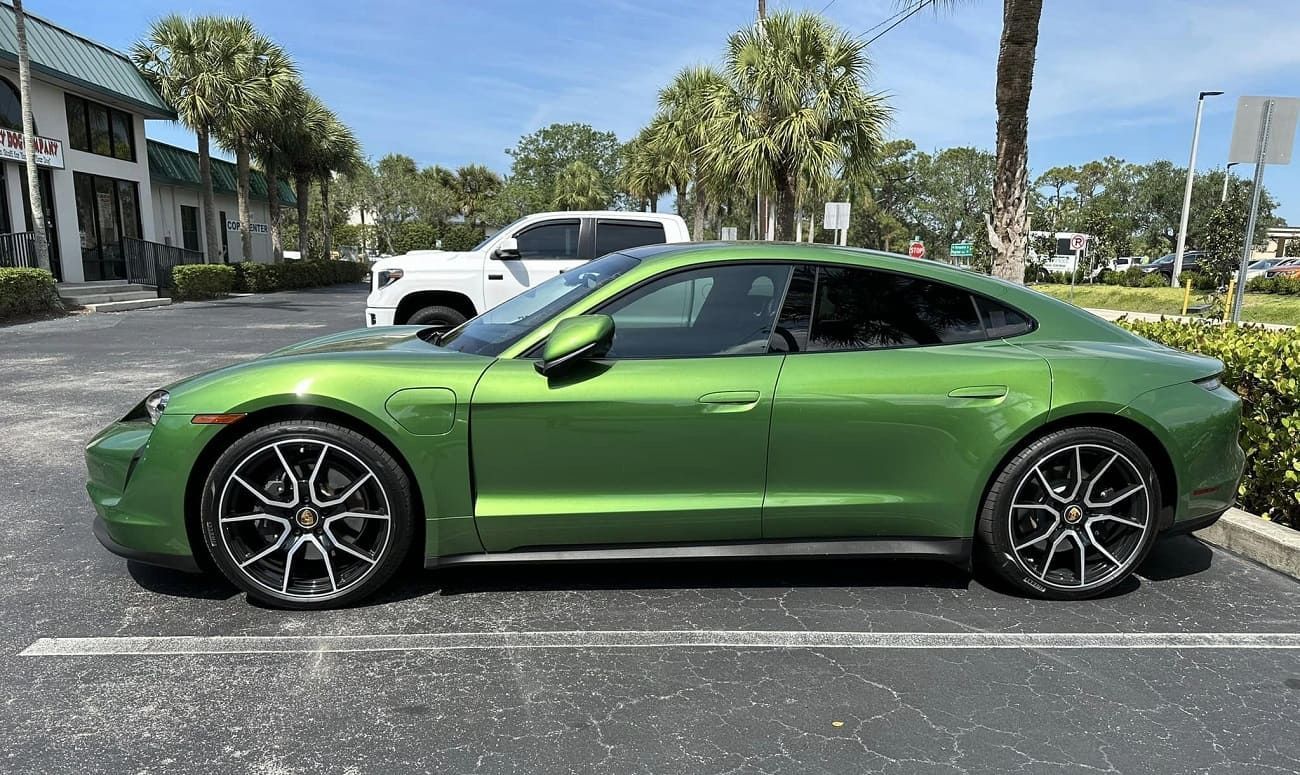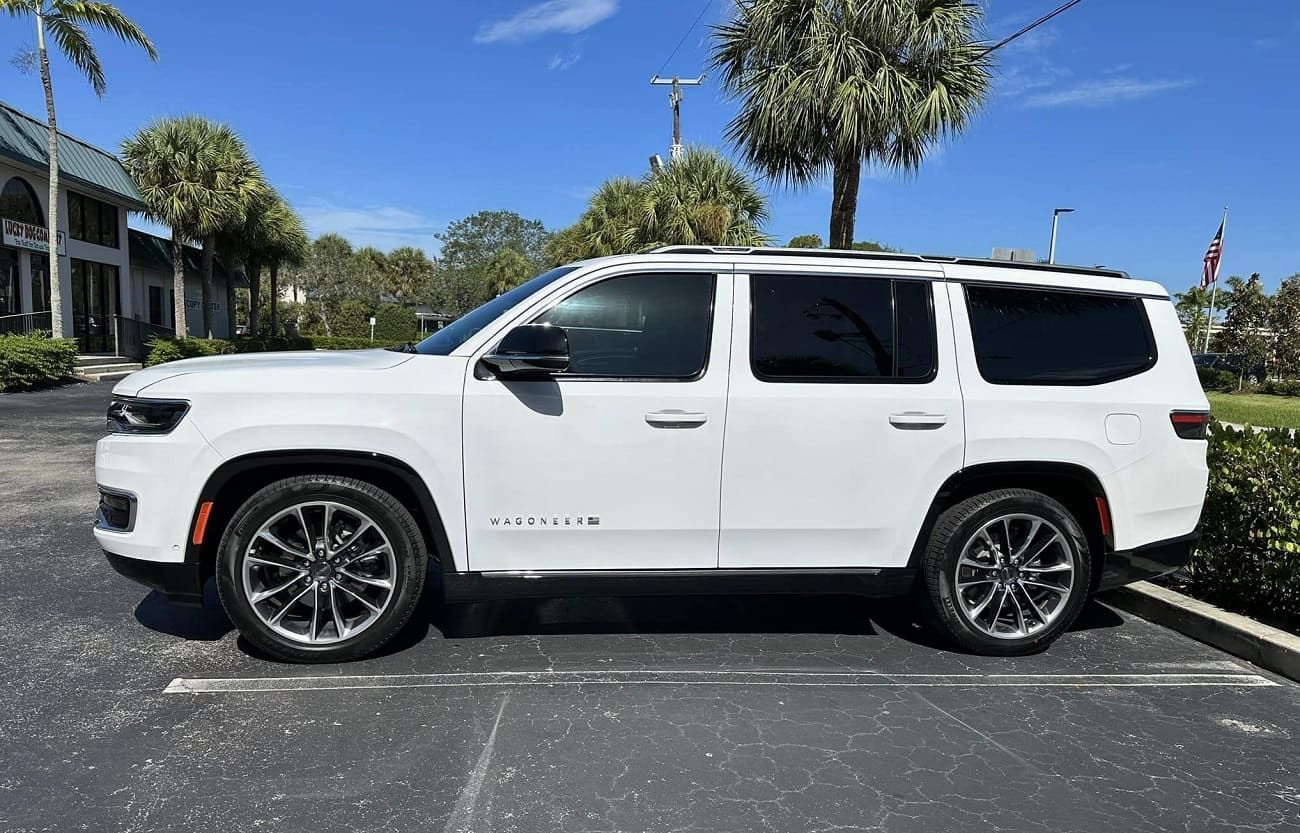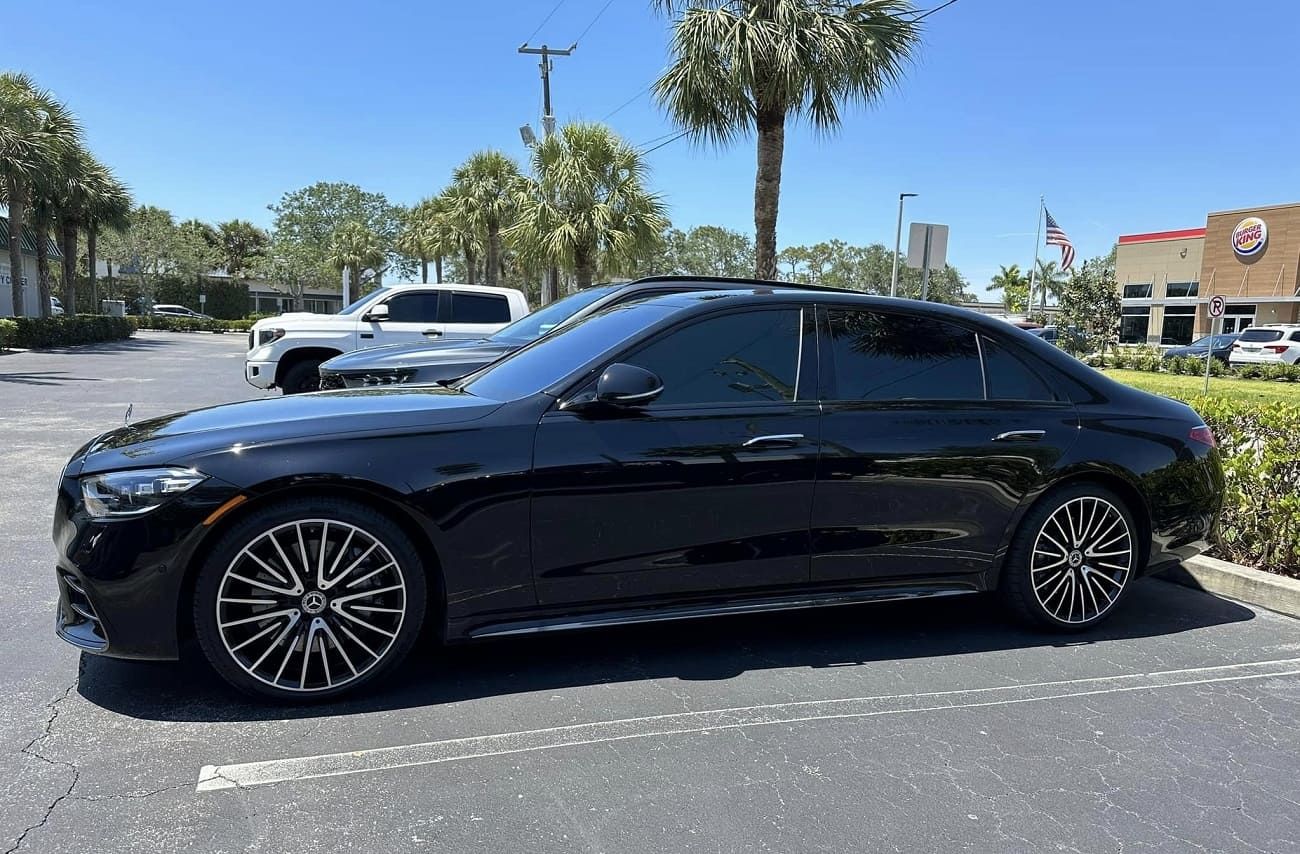Florida Window Tinting Laws
Car window tinting laws in Florida were enacted in 1991.
We have provided all the necessary information about your car’s window tint, including how dark or reflective the tint is allowed in your state.
There are also additional car window tinting rules and regulations in Florida so make sure you read all about it below.
Window tint darkness in Florida
The percent of visible light allowed through your car windows is called VLT: Visible Light Transmission.
The percentage of light allowed through your film and glass in Florida is very specific and different for sedan cars and SUV cars or vans.
Tint darkness for sedans:
- Windshield: Non-reflective tint is allowed above the manufacturer’s AS-1 line.
- Front Side windows: Must allow more than 28% of light in.
- Back Side windows: Must allow more than 15% of light in.
- Rear Window: Must allow more than 15% of light in.
Tint darkness for SUV and vans:
- Windshield: Non-reflective tint is allowed above the manufacturer’s AS-1 line.
- Front Side windows: Must allow more than 28% of light in.
- Back Side windows: Must allow more than 6% of light in.
- Rear Window: Must allow more than 6% of light in.
Florida window tint laws were updated in 2015.
Many resources and local FL tint business have NOT updated info on their websites, but we have.
Please ensure you are reading current info.
Window tint reflection in Florida
Window tint can reflect incoming light and reduce glare and heat.
Florida window tint law permits a certain window reflection when using a tint so make sure you pay attention to this as well.
Tint reflection for sedans:
- Front Side windows: Must not be more than 25% reflective.
- Back Side windows: Must not be more than 35% reflective.
Tint reflection for SUV and vans:
- Front Side windows: Must not be more than 25% reflective.
- Back Side windows: Must not be more than 35% reflective.
Other Florida window tint rules and regulations
Florida does have several other important laws, rules and regulations pertaining to window tinting. They include the following:
- Side Mirrors: Dual side mirrors are required in case any back windows are tinted.
- Restricted Colors: Florida does not permit any colored tint.
- Certificates: Film manufacturers don’t need to certify the film they sell in this state.
- Stickers: The sticker to identify legal tinting is required on the inside of the driver’s side door jamb.
- Medical Exceptions: Florida allows medical exemptions for special tint. For more details about the specific terms of the exemption, consult your state law.
Keep in mind that Florida tinting laws and regulations may be interpreted differently in your county or place of residence.
We always recommend double-checking our information with your local DMV or law enforcement authorities.
Our information about window tint laws in Florida was last updated in 2024.
Tinting laws in Florida were enacted in 1991.
In case any of our info provided is not up to date or correct be sure to contact us so we can fix it. Thanks!
Trusted industry leader in providing accurate window tint laws. Share with confidence:
What is the darkest legal tint in Florida?
In Florida, the darkest legal tint allowed for passenger vehicles is regulated by state law to ensure safety and visibility. For the front side windows, the law permits a window tint with a minimum of 28% visible light transmission (VLT), meaning 28% of light must pass through the window. The rear side windows and the back windshield can have a darker tint, allowing for a VLT of 15%. Additionally, the windshield is restricted to a non-reflective tint that is allowed only above the manufacturer's AS-1 line. These regulations are in place to maintain driver visibility and safety, while also providing some level of privacy and protection from the sun's harmful UV rays. It's essential to comply with these laws to avoid fines and ensure road safety.
Benefits of Legal Window Tinting in Florida
Legal window tinting offers several advantages. It reduces the interior temperature of the vehicle, which is particularly beneficial in Florida’s hot climate. Additionally, it protects the interior upholstery from fading and damage caused by UV rays. Legal tint also provides a level of privacy without compromising safety.
Consequences of Illegal Tint
Going beyond the legal limits can lead to fines, inspection issues, and reduced visibility, so it's best to stay compliant.
Conclusion
In Florida, adhering to the legal window tint limits ensures both your safety and compliance with the law. By staying within the regulations, you can enjoy the advantages of window tint while avoiding fines and potential road hazards. So, when considering window tint for your vehicle, remember to keep it legal and make the road a safer place for everyone.










